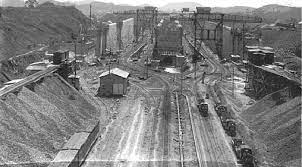On May 4, 1904, the United States began work on one of the largest, most expensive, most difficult engineering projects in history. In doing so, it literally remade the world.
When Columbus became the first European to discover America, it was an accident. He was actually looking for a way to sail around the world from Western Europe to India to chart a shorter, more profitable trade route. (Back then, people thought the world was a bit smaller than it actually is.) After Columbus’ discovery that the American landmass stretched practically from pole to pole, separating the Atlantic and Pacific Oceans, people started wondering if there was some way to dig a canal across it.
Without a canal to make the trip shorter, ships had to sail south around the Southern tip of South America, a lengthy and dangerous journey. In 1529, King Charles V of Spain had plans drawn up to dig a canal across Panama, the narrowest part of the Americas. Nothing ever came of his plans, though. In 1882, the French decided to take a shot at it and actually began digging it. However, they underestimated the difficulty and cost of the project and were forced to abandon their efforts in 1899. Then the U.S. took over the project in 1904.
The first thing the U.S. did was to improve the working and living conditions of the laborers there, greatly reducing mortality rates and improving worker morale. And then they set about literally cutting the Americas in two so that ships could sail directly across it instead of all the way around it. It took just about ten years for the joint U.S. and Panamanian team to complete the canal. It opened for business on August 15, 1914.

